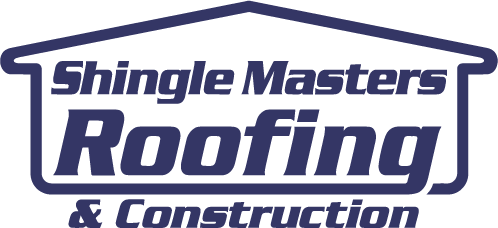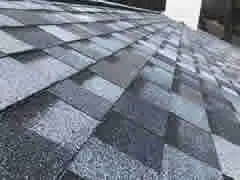Tampa Bay Homeowner’s Guide to a Hurricane-Ready Roof
Tampa Bay Homeowner’s Guide to a Hurricane‑Ready Roof
Last updated: September 26, 2025
Estimated reading time: 10–12 minutes
Key takeaways
- Meet or exceed Florida Building Code. Choose high-wind shingles (ASTM D7158 Class H), a sealed secondary water barrier (SWR), and ring‑shank nails with correct fastening patterns.
- Location matters. Coastal areas like St. Pete Beach and Clearwater have stricter wind requirements than inland areas such as Brandon.
- Installation is critical. Use at least six nails per shingle, SWR underlayment, and reinforced hip and ridge details—proper technique prevents wind uplift and water intrusion.
- Pre‑season maintenance saves roofs. Schedule a spring inspection to fix loose shingles, flashing, and drainage before storms arrive.
- Insurance may discount fortified roofs. Impact‑resistant materials can lower premiums—document your roof before and after storms and know your hurricane deductible.
Table of contents
- What You Need to Know
- How It Works: The Hurricane-Ready Roof Process
- Cost, Timelines & Warranties for a Resilient Roof
- Local Considerations for Tampa Bay Roofing
- When NOT to Do This: Common Roofing Mistakes to Avoid
- Insurance & Storm Damage Claims Explained
- Why Choose ShingleMasters for Your Hurricane-Ready Roof
- Glossary of Roofing Terms
- Protect Your Home Before the Storm
- Sources
- Frequently Asked Questions
What You Need to Know
A hurricane-ready roof is a complete system engineered to resist catastrophic wind uplift, block wind-driven rain, and withstand impacts from flying debris. For Tampa Bay homeowners, this means using Florida-approved products installed to the latest building codes, creating a sealed, durable shield that protects your home’s structural integrity during a storm.
Your Hurricane-Ready Roof Checklist
- Professional Inspection: Schedule a professional roof inspection annually, preferably in late spring before hurricane season peaks.
- Review Materials: Confirm your shingles have a high wind rating (ASTM D3161 Class F or ASTM D7158 Class H).
- Check Underlayment: Ensure you have a sealed secondary water barrier, not just standard felt paper.
- Verify Fasteners: Ask your roofer to confirm the use of corrosion-resistant ring-shank nails and the correct nailing pattern.
- Secure Flashing: Check that flashing around chimneys, vents, and skylights is secure and properly sealed.
- Clean Gutters: Remove all leaves and debris from gutters and downspouts to ensure proper water drainage.
- Trim Trees: Cut back any overhanging tree branches that could break and damage your roof in high winds.
- Document Everything: Take clear, dated photos of your roof’s condition before storm season for insurance purposes.
How It Works: The Hurricane-Ready Roof Process
Achieving a hurricane-ready roof is a step-by-step process that combines expert assessment, superior materials, and precise installation techniques. Here is what you can expect when partnering with a certified roofing professional like ShingleMasters.
1. Comprehensive Inspection & Assessment
A thorough inspection is the foundation of a hurricane-ready roof. A certified inspector will walk your entire roof, get into the attic space, and use tools like moisture meters to identify not just obvious damage but also hidden vulnerabilities.
- Who Does It: A licensed and insured roofing contractor.
- Typical Duration: 1–2 hours.
2. Detailed Estimate & Material Selection
Based on the inspection, the contractor will provide a detailed estimate outlining the scope of work. This is the stage where you will discuss specific hurricane-resistant components.
- High-Wind Shingles: Look for shingles rated Class H under the ASTM D7158 test, certified to withstand winds up to 150 mph.
- Secondary Water Resistance (SWR): A self-adhering membrane applied directly to the roof deck. Also known as a “peel-and-stick” underlayment, it creates a waterproof seal that protects your home even if shingles are blown off.
- Ring-Shank Nails: Fasteners with ridges along the shank that grip the wood deck far more securely than smooth-shank nails, dramatically improving resistance to wind uplift.
- Hip & Ridge Detailing: Special-made shingles designed for these high-stress areas are crucial for preventing wind from getting under the roof system.
3. Professional Installation
The installation team will tear off the old roofing material down to the wood deck. They will then re‑nail the deck to meet current Florida Building Code standards before installing the new, complete roofing system.
- Who Does It: A certified and supervised installation crew.
- Typical Duration: 2–5 days, depending on roof size and complexity.
4. Meticulous Cleanup
A professional crew protects your property throughout the project. They use tarps to shield landscaping and run magnetic rollers across your yard to pick up stray nails and fasteners, leaving your property as clean as they found it.
5. Warranty & Registration
Upon completion, you receive two types of warranties. The manufacturer provides a warranty on the material itself, while the contractor provides a workmanship warranty covering the installation. Your contractor should also register the manufacturer’s warranty on your behalf to ensure it is properly activated.
Cost, Timelines & Warranties for a Resilient Roof
Investing in a hurricane-ready roof involves understanding the costs, how long it will take, and the warranties that protect your investment. Prices and timelines can vary based on your home’s size, the materials you choose, and the complexity of your roof’s design.
A typical roof replacement in the Tampa Bay area can take anywhere from 2 to 5 days. Factors that can extend this timeline include complex roof architecture, extensive wood rot repair, or weather delays.
It is critical to distinguish between two types of warranties:
- Material Warranty: This comes from the product manufacturer (e.g., GAF, Owens Corning). It covers defects in the roofing materials themselves. A “lifetime” warranty typically means for as long as you, the original owner, own the home.
- Workmanship Warranty: Provided by your roofing contractor and covers errors in installation. A reputable contractor will offer a long-term workmanship warranty, which is a sign of their confidence in their installation standards.
| Material | Wind Rating (ASTM D7158) | Impact Class (UL 2218) | Typical Warranty | Typical Cost Range (per sq. ft.) |
|---|---|---|---|---|
| Architectural Shingles | Class H (150 mph) | Class 3 or 4 | 30-Year to Lifetime | $4.50 – $7.50 |
| Metal (Standing Seam) | 140-160 mph+ | Class 4 | 40-Year to Lifetime | $9.00 – $16.00 |
| Concrete/Clay Tile | Varies by profile | Class 3 or 4 | 50-Year to Lifetime | $12.00 – $25.00 |
Disclaimer: Costs are estimates for informational purposes and vary based on market conditions, roof complexity, and chosen contractor. Wind ratings and warranties vary by manufacturer—verify all specs with the source.
Local Considerations for Tampa Bay Roofing
Building a resilient roof in Tampa Bay means understanding our specific local environment, from building codes in St. Petersburg to the intense sun in Brandon.
Navigating Permits and Codes
The Florida Building Code (FBC) dictates the minimum standards for roofing, and these requirements are not uniform across the region. Wind zone requirements are higher along the coast.
- Coastal & HVHZ Areas: Homes in Pinellas County, especially on the barrier islands, or in coastal Hillsborough County may fall into a higher Wind-Borne Debris Region. This requires stricter fastening patterns and may mandate impact-rated windows and doors as part of a complete hurricane-ready envelope.
- Inland Areas: Neighborhoods further inland, such as in East Hillsborough or Pasco County, still have robust wind requirements but may not face the same stringent codes as coastal properties.
Your professional roofer must pull a permit for a roof replacement. This triggers inspections by the local building department to ensure all work complies with the FBC. You can verify your local requirements at your county’s building department website.
Tampa Bay Microclimates: Salt vs. Heat
- Coastal Salt Spray: If you live near the Gulf, the salty, moist air can accelerate the corrosion of metal components like flashing and fasteners. Using stainless steel or hot-dip galvanized nails and corrosion-resistant metal flashing is essential.
- Inland Heat: The intense sun and high humidity in areas away from the coast can cause shingles to degrade faster. Choosing shingles with advanced granule technology that reflects solar radiation (cool roof shingles) can help extend the life of your roof and may even lower your cooling costs.
When NOT to Do This: Common Roofing Mistakes to Avoid
A hurricane-ready roof is only as good as its weakest point. Avoiding common shortcuts and mistakes is essential for ensuring your home is truly protected.
- Do not place new shingles over old ones. A “roof-over” adds excess weight and can hide underlying problems with the roof deck. The Florida Building Code requires a full tear-off for most roof replacements.
- Do not hire an unlicensed or uninsured contractor. Verify your contractor’s license with the Florida Department of Business and Professional Regulation (DBPR). Without proper insurance, you could be liable for accidents on your property.
- Do not use standard felt paper. While cheap, it offers minimal protection against wind-driven rain once shingles are compromised. A sealed, self-adhering secondary water barrier is the standard for hurricane resilience.
- Do not allow the use of smooth-shank nails. Ring-shank nails offer vastly superior pull-through resistance and are a critical component of a high-wind roof system.
- Do not ignore attic ventilation. A poorly ventilated attic can trap super-heated, moist air, which can bake your shingles from below and lead to premature failure. Ensure your roofer follows a balanced ventilation plan with proper intake and exhaust vents.
Insurance & Storm Damage Claims Explained
Disclaimer: This is for informational purposes and is not legal or insurance advice. Always verify coverage and procedures directly with your insurance carrier.
The Storm Damage Claim Process
- Document Damage: As soon as it is safe, take photos and videos of all visible roof damage and any interior damage (e.g., water stains).
- Verify Coverage: Review your homeowner’s insurance policy to understand your coverage, limits, and deductible, especially your “hurricane deductible.”
- File the Claim: Contact your insurance company to open a claim. They will provide you with a claim number and assign an adjuster.
- Schedule Inspections: Your insurance company will send their adjuster to inspect the damage. You should also have your trusted roofing contractor present to represent your interests and ensure all damage is documented.
- Review the Scope of Work: The adjuster will create a “scope of work” detailing the approved repairs and costs. Your contractor should review this carefully to ensure it is accurate and complete.
- Handle Supplements: If your contractor finds additional damage not included in the original scope, they will file a “supplement” with the insurance company to request additional funds.
- Complete Repairs: Once the scope and cost are agreed upon, your roofer can begin the repairs.
- Release of Depreciation: Most policies are “Recoverable Cash Value” (RCV). You first receive the “Actual Cash Value” (ACV), and the remaining amount (depreciation) is released after your contractor submits a final invoice showing the work is complete.
Your Insurance Verification Checklist
- What is my standard deductible?
- What is my hurricane deductible (often a percentage of my home’s insured value)?
- Is my roof covered for Replacement Cost Value (RCV) or Actual Cash Value (ACV)?
- Are there any age limitations on my roof for full replacement coverage?
- Does my policy require specific temporary repairs after damage occurs?
- Do I have coverage for building code upgrades (Ordinance or Law)?
- What are the deadlines for filing a claim after a storm?
- Does my policy offer discounts for wind mitigation features like a hip roof or a secondary water barrier?
Why Choose ShingleMasters for Your Hurricane-Ready Roof
At ShingleMasters Roofing, building a hurricane-ready roof is at the core of what we do. We combine deep local knowledge of Tampa Bay’s unique climate with a commitment to the highest installation standards, ensuring your home is protected when it matters most.
Our process is designed for your peace of mind:
- Certified Installers: We are certified installers for leading manufacturers, which means our crews are factory-trained in the specific installation techniques required to validate enhanced warranties.
- Code-Plus Standards: We don’t just build to code; we build beyond it. From using extra fasteners to ensuring perfect flashing detail, we focus on the small things that make a big difference in a storm.
- Transparent Communication: From the initial inspection to the final walkthrough, we keep you informed. You receive a detailed project plan, daily updates, and a comprehensive final report.
- Property Protection Guarantee: We treat your home like our own. Our crews are meticulous about protecting your landscaping, A/C units, and driveway, and we perform a thorough magnetic sweep for nails upon completion.
- Flexible Financing: We believe every homeowner deserves a safe roof. We offer a range of flexible financing options to ensure your project fits your budget.
- Lifetime Warranty Options: Because we are certified and trust our workmanship, we can offer top-tier lifetime warranty packages that cover both materials and labor, giving you the ultimate long-term protection.
To learn more about our specific services, explore our roof replacement process or read about our storm damage repair expertise.
Glossary of Roofing Terms
- ASTM D7158: The standard test method for wind resistance of sealed asphalt shingles (up to 150 mph for Class H).
- Class 4 Impact Rating (UL 2218): The highest rating for a shingle’s ability to withstand impact from hail and debris.
- Decking (or Sheathing): The plywood or OSB boards that create the structural surface of the roof.
- Flashing: Pieces of metal used to prevent water from seeping into intersections, such as where the roof meets a chimney, wall, or valley.
- Hip & Ridge: The angled, raised seams on a roof where different planes meet. Special shingles are used to cover these high-stress areas.
- Ring-Shank Nail: A type of nail with rings on the shank that provides superior grip and resistance to being pulled out by wind forces.
- Secondary Water Resistance (SWR): A self-adhering, rubberized asphalt membrane applied to the roof deck as a premium underlayment, providing a waterproof barrier.
- Underlayment: The layer of material between the roof deck and the shingles, serving as a secondary barrier to moisture.
Protect Your Home Before the Storm
Hurricane season waits for no one. A compromised roof is the single biggest threat to your home’s safety during a storm. Taking proactive steps today provides the peace of mind you deserve when the winds start to blow.
Our no-pressure, comprehensive roof inspections are always free. A ShingleMasters expert will assess your roof’s condition, identify any vulnerabilities, and provide you with a clear, honest report so you can make an informed decision.
If you only do 3 things:
- Schedule a Free Inspection: Get a professional assessment of your roof’s current condition before storm season arrives.
- Review Your Insurance Policy: Understand your hurricane deductible and coverage limitations now, not after a storm.
- Trim Your Trees: Remove any overhanging branches that could become dangerous projectiles in high winds.
Don’t wait for a storm to be named. Schedule your free, hurricane-ready roof inspection with ShingleMasters today.
Sources
- Florida Building Code, 8th Edition (2023), Building — Florida Department of Business and Professional Regulation
- Standard Test Method for Wind Resistance of Sealed Asphalt Shingles (Uplift Force/Uplift Resistance Method), ASTM D7158-19 — ASTM International
- Standard for Impact Resistance of Prepared Roof Covering Materials, UL 2218 — Underwriters Laboratories (Note: Direct standard access is typically firewalled).
- Roof Coverings, Chapter 9, 2021 International Residential Code (IRC) — ICC
- Guide to Hurricane-Resilient Roofing — FEMA
- Asphalt Shingle Roofing for High-Wind Regions — Insurance Institute for Business & Home Safety (IBHS)
Frequently Asked Questions
How long does a hurricane-ready roof replacement take?
A typical asphalt shingle roof replacement in the Tampa Bay area takes 2 to 5 days. This includes the full tear-off, deck inspection and re-nailing, installation of all new components, and final cleanup. Larger or more complex roofs, or the discovery of significant wood rot, can extend this timeline.
Are high-wind “150 mph” shingles really hurricane-proof?
High-wind shingles, like those rated ASTM D7158 Class H, are tested to resist wind uplift at speeds up to 150 mph. While no roof is truly “hurricane-proof,” these shingles, when installed as part of a complete system with proper nailing and underlayment, provide vastly superior resistance and are your best defense against catastrophic failure.
Is a Class 4 impact rating worth the extra cost in Florida?
A Class 4 impact rating (UL 2218) means the shingle can withstand impacts from a 2-inch steel ball dropped from 20 feet without cracking. While hurricanes bring high winds, hail is also a common threat in Florida thunderstorms. A Class 4 roof may make you eligible for significant discounts on your homeowner’s insurance premium, potentially offsetting the higher upfront cost over time.
Can I just repair my roof instead of replacing it?
Minor, isolated damage on a relatively new roof can often be repaired. However, if your roof is over 15–20 years old, has widespread damage, or has previously been repaired multiple times, a full replacement is often the safer and more cost-effective solution for ensuring hurricane readiness.
What is a secondary water barrier and why do I need one?
A secondary water resistance barrier, or SWR, is a self-adhering membrane applied to the entire roof deck. Unlike traditional felt paper, it seals around every nail penetration, creating a waterproof barrier. If shingles are blown off during a hurricane, this layer is your last line of defense, preventing water from pouring into your home.
How can I tell if I have storm damage?
After a storm, look for missing, cracked, or bruised shingles. Check for granules collecting in your gutters, which indicates shingle wear. Also, inspect vents, flashing, and skylights for any signs of lifting or damage. If you suspect any issues, call for a professional inspection.



